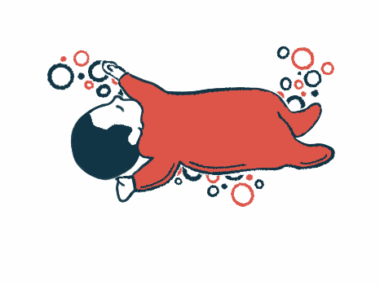Cerdelga shows benefits in children with Gaucher disease type 1: Study
The therapy is only approved in the US for adults
Written by |

Treatment with Cerdelga (eliglustat), a substrate reduction therapy approved in the U.S. for adults with type 1 Gaucher disease, was safe and showed therapeutic potential in children with the condition, a real-world study finds.
“This case series highlights real-world experience with [Cerdelga] in pediatric [Gaucher type 1] patients, providing important insights into its potential to improve clinical outcomes and optimize disease management,” the study’s researchers wrote. The study, “Eliglustat substrate reduction therapy in children with Gaucher disease type 1,” was published in Frontiers in Pediatrics. It received funding support from Sanofi, Cerdelga’s developer.
Gaucher disease is caused by mutations in the GBA1 gene that lead to a deficiency in glucocerebrosidase (GCase), the enzyme usually responsible for breaking down a fatty molecule called glucocerebroside (Gb1) in cells. As a result, Gb1 accumulates in cells, particularly in immune cells called macrophages, which build up in organs and cause damage. Type 1 Gaucher, the most common form of the disease, affects mainly the spleen, liver, and bones, but it lacks neurological symptoms.
Enzyme replacement therapy (ERT) is the standard-of-care treatment for Gaucher disease, providing a functional version of GCase via regular infusions into the bloodstream. However, its use has drawbacks, including adverse infusion reactions or developing of antibodies against the enzyme that limit its effectiveness.
Cerdelga belongs to a class of oral medications called substrate reduction therapies (SRT) that work to reduce Gb1 production rather than provide the missing enzyme. While it has the potential to overcome some of the limitations of ERT, Cerdelga is only approved in the U.S. for adults with type 1 Gaucher disease. It isn’t cleared for pediatric patients.
Testing Cerdelga in children with type 1 Gaucher
Here, scientists provided real-world evidence for using Cerdelga in children with type 1 Gaucher who were seen at a specialized care center in the U.S. The analysis included 14 children who faced barriers to receiving ERT and were started on Cerdelga at a mean age of 12.5, for a median of 3.6 years.
Eleven children had been on ERT previously and three were treatment-naïve. Barriers to ERT use included antibody development, post-traumatic stress disorder from ERT infusions, continued complications despite ERT, isolation or burden from the treatment, or refusing ERT due to needle phobia.
The researchers first described the case of a child who’d switched from ERT because of recurrent avascular necrosis (AVN), a Gaucher complication where a lack of blood supply causes bone tissue death. At an evaluation in the scientists’ clinic, the child was wheelchair-bound and in severe pain. Over the seven years after starting Cerdelga, the child had no new bone crises or AVN and saw improvements in other disease-related features.
Benefits of SRT treatment
Across the entire group of children, levels of glucosylsphingosine (lyso-Gb1), a disease biomarker, were reduced by 70% with SRT, including a 61% reduction in those who switched from ERT and a 93% reduction in those who hadn’t received previous treatment.
The scientists noted the importance of close individual evaluation, however, and provided the example of one child who appeared to have a failed response to SRT — lyso-Gb1 levels rose after starting treatment — but actually hadn’t been complying with it.
Another child was assumed to have an excellent biochemical response based on strong declines in lyso-Gb1 levels, but continued to show other signs of a poor response in blood work. This was ultimately attributed to other complications from a separate clinical diagnosis.
“These cases illustrate the importance of individualized patient evaluation to accurately interpret treatment outcomes, taking into account factors such as treatment adherence and concurrent diagnoses,” the researchers wrote.
The results showed other benefits, including reductions in spleen size and improvements or stabilizations in bone-related measures.
Life quality questionnaires reflected improvements across physical, mental, and social domains, and no patient or caregiver expressed a desire to return to ERT.
The treatment was generally well tolerated, with the most common side effect being acid reflux (21%), which was medically managed without treatment needing to be stopped.
The “findings align with existing data from adult studies and emphasize the broader benefits of [Cerdelga],” the researchers wrote, noting the treatment could become a “preferred therapeutic choice” for children who face challenges with ERT. “Replication of these findings in larger, more diverse study cohorts or registries … will be essential to confirm the observed trends and enhance the generalizability of our results,” they wrote.
Meanwhile, an ongoing Sanofi-sponsored Phase 3 clinical trial (NCT03485677) called ELIKIDS is testing the safety and efficacy of Cerdelga, with or without ERT. The trial included about 57 children, ages 2-17, with Gaucher disease types 1 and 3. It is expected to finish this year.




